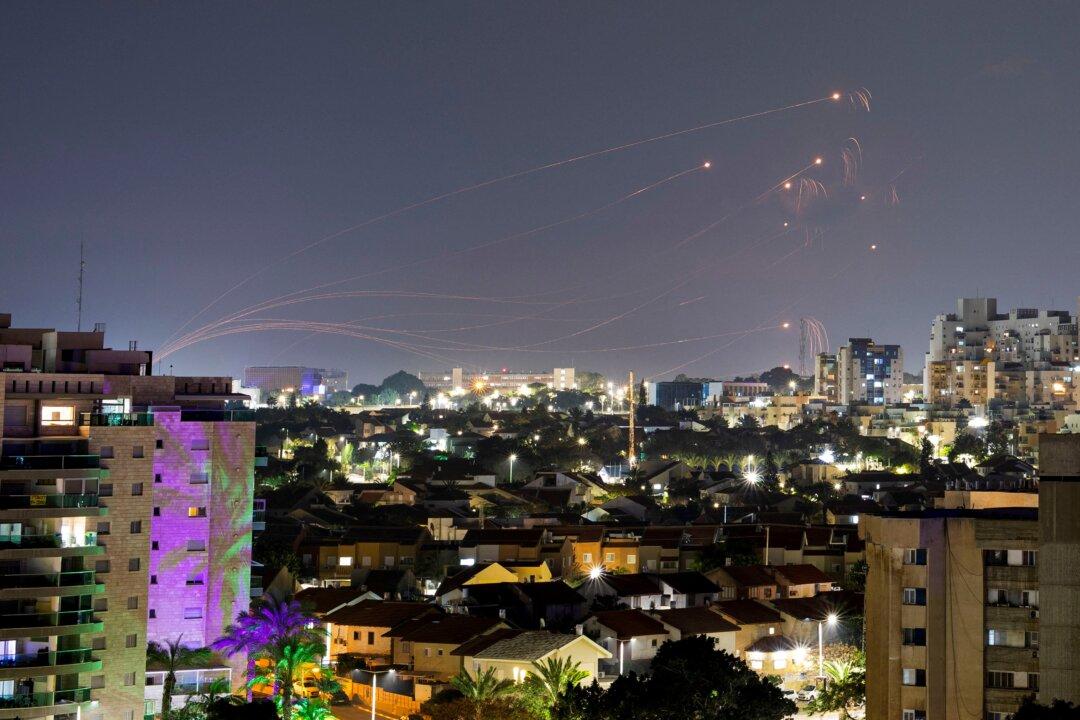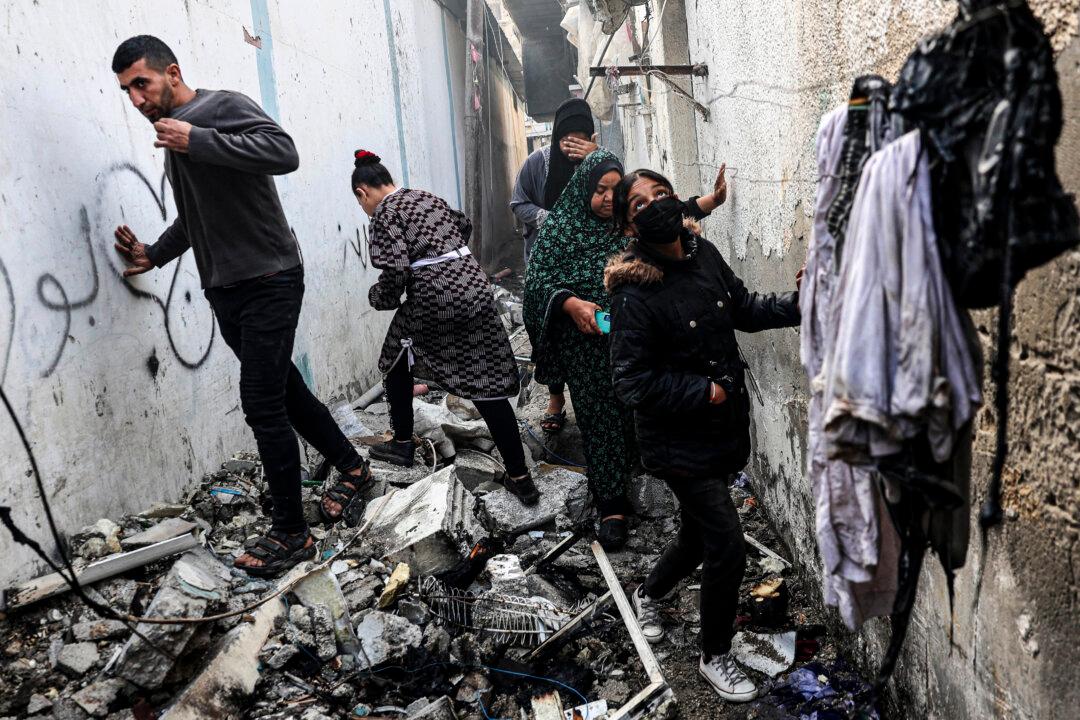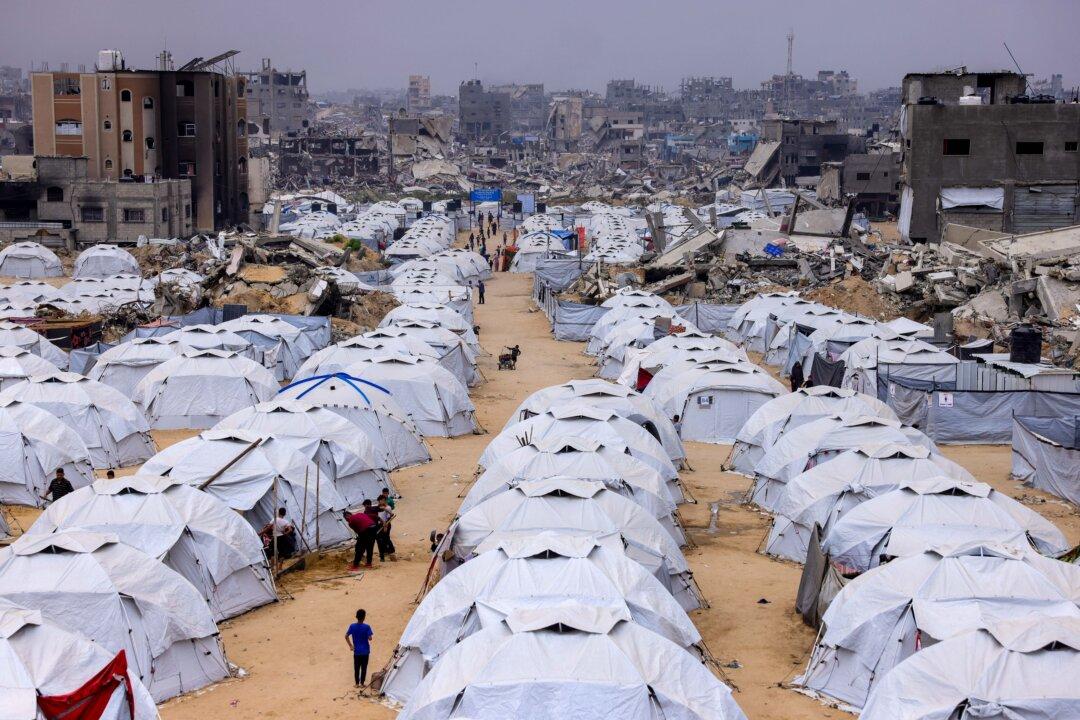In the Gaza fighting over the last few days the Israeli army reported finding terrorist activity at U.N. sites at opposite ends of the Gaza Strip.
In Rafah, near the strip’s southern border, the army attacked and destroyed a 500-meter-long tunnel (about 547 yards long) adjoining a U.N.-run school in the Tel al-Sultan neighborhood in Rafah, the Israel Defence Forces (IDF) said in a public statement. Underneath it was what was described as Islamic Jihad’s largest underground site in the Gaza Strip for the production of rocket parts and long-range rockets.
The IDF attacked and destroyed the site—simultaneously above and below ground—with drones and targeted missiles on June 29. It also said it eliminated a launch site with nine rocket launchers.
“The destruction of the outpost and the underground production site damages the Islamic Jihad’s ability to produce and fire rockets at Israeli civilians and communities,” the IDF statement said.
The army released a map showing the route of the tunnel, which terminates near a school operated by the United Nations Relief and Works Agency (UNRWA).

Also over the weekend, IDF units in Gaza City near the north end of the strip fought their way into a U.N. school in the Shejaiya neighborhood—a location they said Hamas was using as a hideout and a warehouse. They also found a long-range rocket launcher there.
“The troops discovered dozens of weapons, grenades, and valuable intelligence documents,” the IDF said. And they found a “terrorist war room” in a medical clinic nearby, “containing communications devices, enemy documents, and observation devices.”
“This is further evidence of Hamas embedding itself in civilian structures for terrorist purposes,” the IDF said.
The Epoch Times couldn’t independently verify the IDF’s findings.
UNRWA, which works exclusively with Palestinians, has caused controversy for years over its close ties to Hamas.
Its defenders say that it has no choice but to deal with Hamas, which controls the Gaza Strip.
Israel has accused the agency of indoctrinating Palestinian children in Gaza to hate Israelis and wage war against Israel, and additionally says some of its employees are members of Hamas.
The U.N. fired 12 staffers alleged to have participated in Hamas’s Oct. 7 massacre of 1,200 Israelis, mostly civilians, and its kidnapping of hundreds more.
The IDF says UNRWA facilities, including schools and hospitals, are often used by terrorist organizations as human shields, for weapons storage, and sometimes to serve as command and computer centers.
Fighting in Lebanon, Tension Over West Bank Settlements
An Israeli strike in the southern Lebanese city of Tyre, meanwhile, killed a senior commander of the Hezbollah militant group. Hezbollah identified the victim as Mohammed Naameh Nasser, also known as Abu Naameh, the head of the terrorist group’s Aziz Unit, one of its three regional divisions in southern Lebanon. Video circulated of a large plume of smoke rising from a charred vehicle.The IDF didn’t immediately comment on the attack but said late on July 3 that Hezbollah had fired at least 100 rockets at northern Israel. Most of the rockets, aimed at Kiryat Shmona, the Galilee panhandle, and the northern Golan Heights, struck open areas, the army said.

Rocket and bombing activity on the northern front, which began after Hamas’s Oct. 7 attack, has accelerated since early May, with Hezbollah sending hundreds of rockets and drones each month and Israel retaliating.
In the northern city of Karmiel, a few miles south of the Lebanese border, one person was killed and another injured in a stabbing attack at a shopping mall, Israeli police said.
According to Reuters, Israeli press reports identified the attacker, who was shot dead, as Joud Rabia, an Israeli Arab from Nahaf, a town next to Karmiel.
Israeli television showed a woman, believed to be a family member of the attacker, being taken into custody by police at the mall. Some Israeli media reported the victim as a 19-year-old soldier serving in an armored unit.
Israeli police clashed with Jewish residents in the West Bank, dismantling an outpost, Tzur Harel, the police said was illegal. Residents sat down in an attempt to obstruct the demolition.
National Unity party leader Benny Gantz, who recently quit Prime Minister Benjamin Netanyahu’s coalition government, accused them of throwing stones and assaulting a civil administrator.
That move came even as the government approved 5,300 new Israeli homes in five developments on the West Bank, which many Israelis refer to as Judea and Samaria, the ancient and Biblical names of the lands.
Finance Minister Bezalel Smotrich said on June 28 that the move represented one outpost for each of the five European countries that have recently recognized Palestine as an independent nation.
The government designated almost 5 square miles of land in the Jordan Valley for Jewish settlement. An anti-settlement group said that was the largest such move in more than three decades, since the start of the failed 1993 Oslo Accords peace process.







